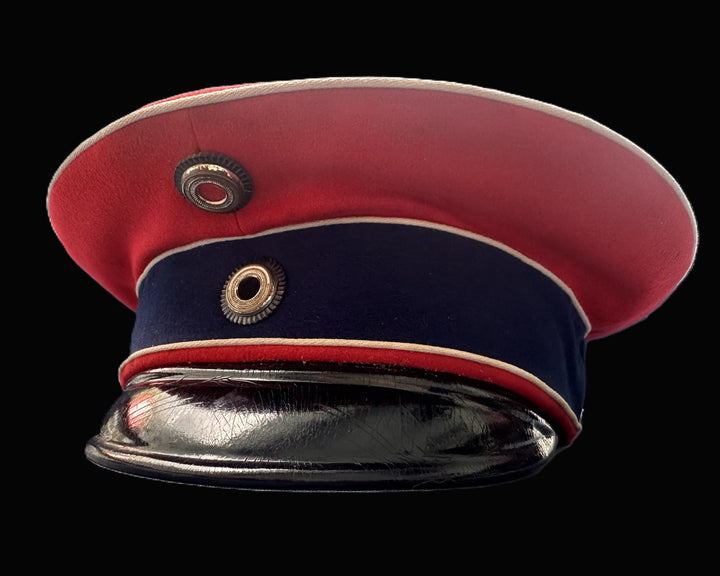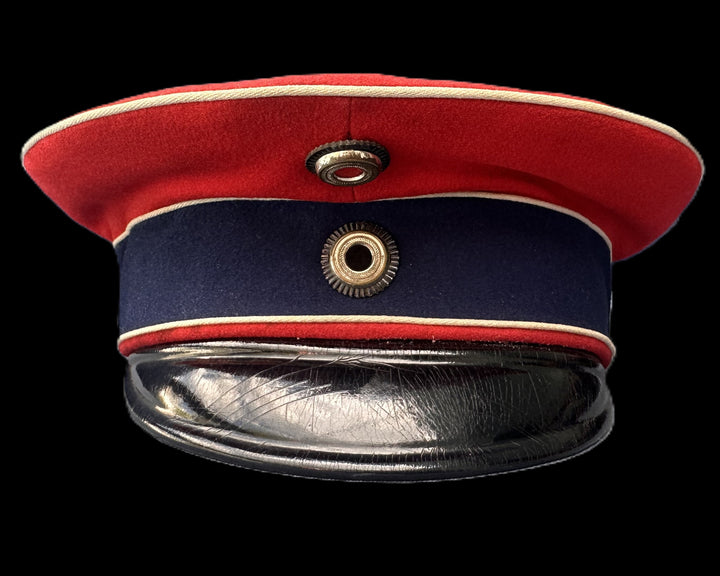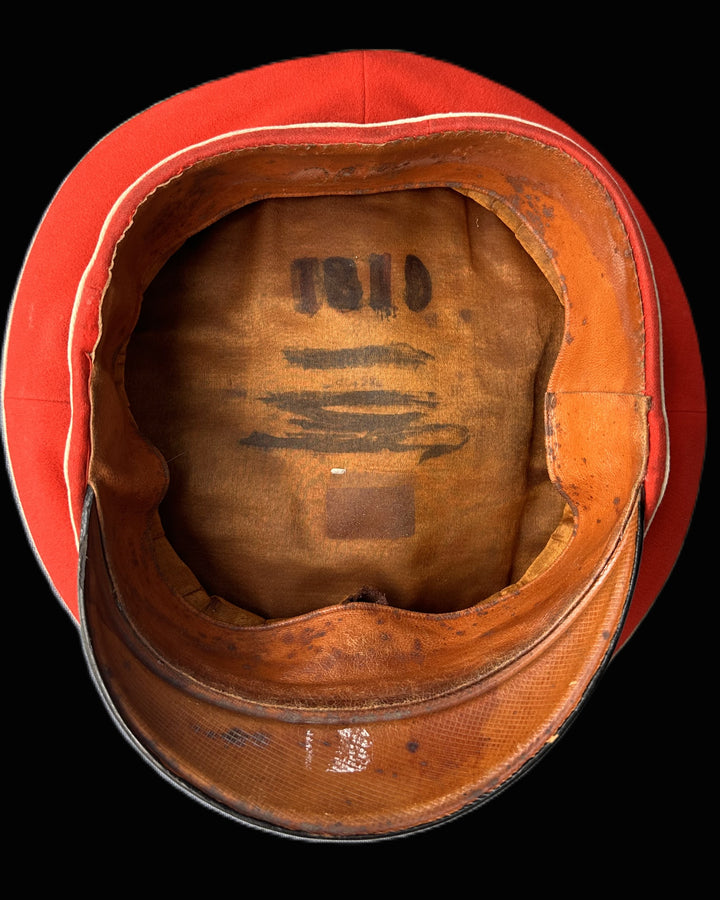Imperial German Officer’s Schirmmütze – Husaren-Regiment von Zieten (Brandenburgisches) Nr. 3
- Regular price
- $1,295.00
- Sale price
- $1,295.00
- Regular price
SKU: 33-47 XBS
This finely preserved officer’s Schirmmütze (visor cap) originates from Husaren-Regiment von Zieten (Brandenburgisches) Nr. 3, a famed cavalry regiment of the Imperial German Army. The regiment was formed in 1730 and later stationed in Rathenow, attached to the III. Armee-Korps. Among the many Prussian Hussar regiments, only three—including this one—wore uniforms adorned with red Attilas and red-topped Schirmmützen, making them highly distinctive and visually striking.
This unit traced its roots to Frederick the Great, with its soldiers participating in legendary campaigns from the Napoleonic Wars (possibly Waterloo) to the Franco-Prussian War of 1870–71. By World War I, the romantic age of cavalry was giving way to trench warfare, and most Hussar regiments, including this one, served as dismounted troops, their brightly colored dress uniforms a poignant echo of a bygone era.
This visor cap is a textbook pre-war example, notable for its medium red (ponceau) wool top, a deep dark blue (black) band, and white piping—colors associated with the regiment. The front bears a single large cockade (kokarde), indicating Prussian service, as well as a smaller Reich cockade, confirming manufacture after the 1897 introduction of the national insignia. The trim and materials are consistent with production around 1898–1900.
The black lacquered leather visor remains firmly affixed and displays minor age-appropriate wear. A tiny moth bloom, barely visible, is the only notable exterior flaw.
Inside, the visor cap is lined with a brown silk interior and retains its brown leather sweatband. The sweatband is intact and shows moderate soiling, but no tears. The liner exhibits blacked-out script, a common practice either by descendants wishing to preserve a relative’s anonymity, or by museums attempting to depersonalize artifacts for display. The presence of these marks adds a layer of mystery and authenticity.
This is an excellent and rare example of an officer’s Schirmmütze from one of the Imperial German Army’s most colorful regiments. It would be a prized addition for any collector of pre-WWI cavalry or Imperial German militaria.











